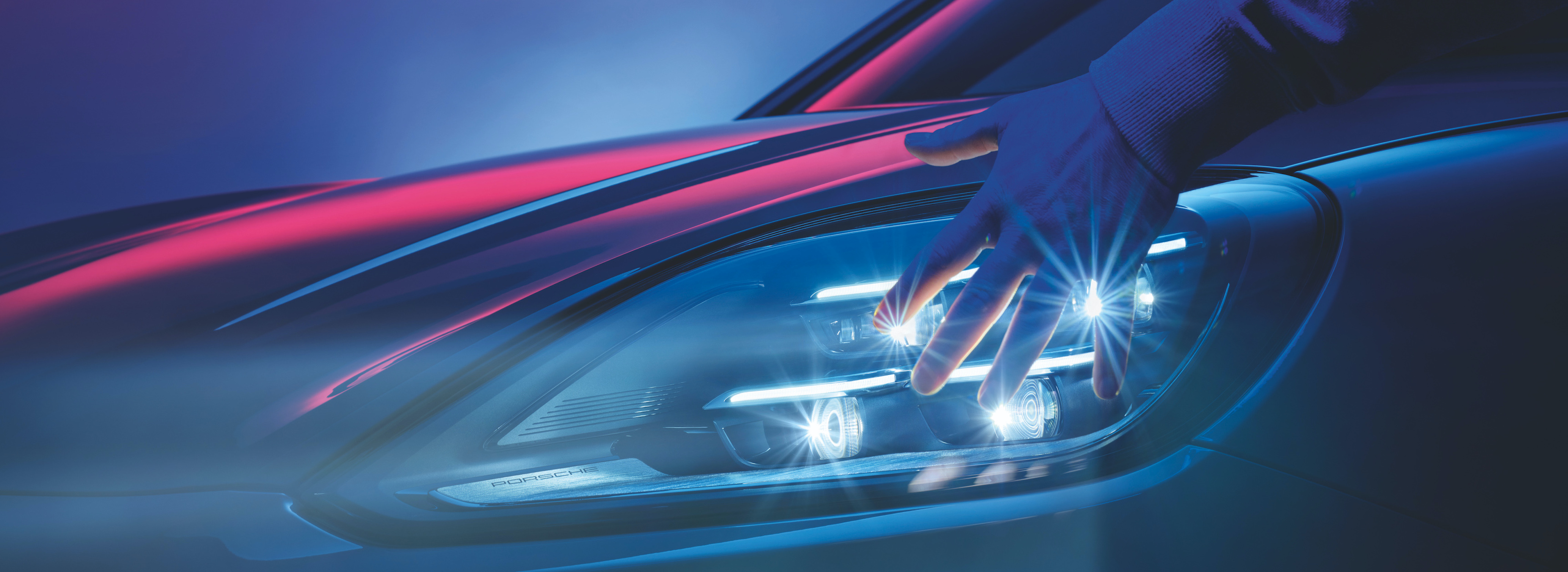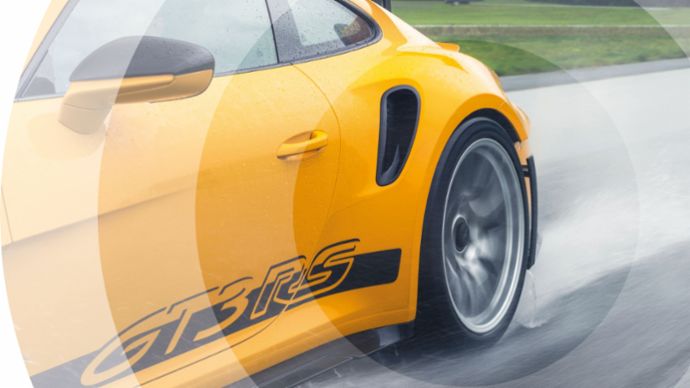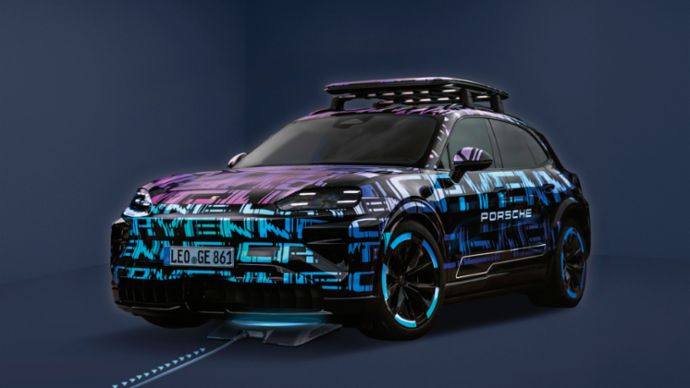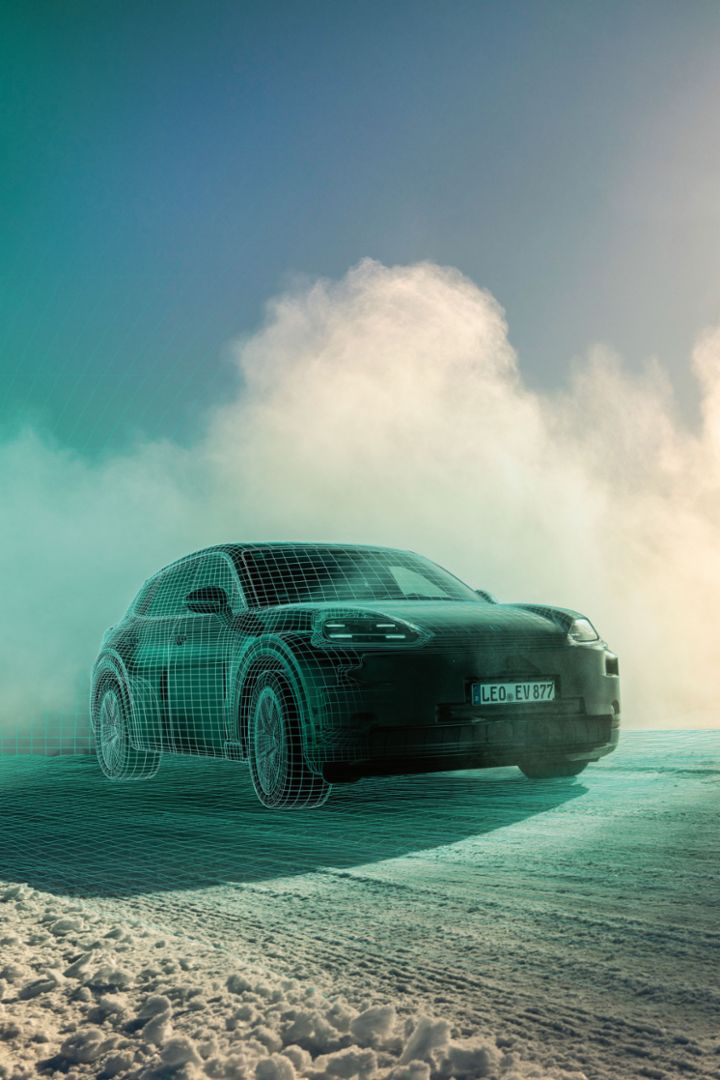A Shining Light
The new Porsche Cayenne recently celebrated its global premiere, alongside the first HD Matrix LED headlight worldwide, which transforms a night drive into an illuminating show of lights.
It’s as if the headlight is projecting a film onto the road. As the new Cayenne merges onto the autobahn, the lighting system activates automatically – and casts a very bright carpet of light in front of the SUV. As soon as it detects a vehicle ahead, the carpet of light is reduced in size. When changing lanes, it widens to both lanes for a short time. As if by magnets, the rectangle of light sticks within the lane markings.
With the HD Matrix LED headlights in the new Cayenne, the next dimension of light technology has been achieved. Lane illumination – that is what the function described in the scenario is called. To keep the projection of the headlights in the lane as precisely as possible, the system uses data from the front camera and the navigation system. It is one of many capabilities that the innovative light system has to offer – brighter and more intelligent than ever before. The 65,536 LEDs of the two Cayenne headlights illuminate the darkness for a distance of up to 600 meters and provide a pleasantly wide field of light. With intelligently controlled continuous main beam headlights, the innovative feature significantly increases comfort and safety for progress you can actually see.

The construction and narrow-lane light automatically activates on the detection of the corresponding lane markings and through the use of online traffic data. This makes it easier to navigate narrow lanes, here too with a carpet of light. On freeways, when the high beams are activated, drivers of approaching trucks, who are seated at a higher level, are very effectively masked out. This so-called adaptive freeway high beam deliberately cuts off at the median strip that separates the two directions of driving. The helpful Cayenne also provides light as bright as day on country roads at night and masks out oncoming vehicles with precision. But the headlights also use the freed-up light energy of the dimmed LEDs and apply it directly to the adjacent areas to the right and left. Despite dimming for oncoming vehicles, the overall light does not lose much of its strength.
Unmistakably Porsche – the light of the future in a dream
The high-end headlights are the brand’s new visual fingerprint – and unmistakably Porsche, as the low-beam design of the HD Matrix headlights is a groundbreaking reinterpretation of the brand’s signature four-point daytime running light and thus a unique selling point. The headlight generates all of the daytime running, low beam, and high beam functions with four modules –design and function in harmony.
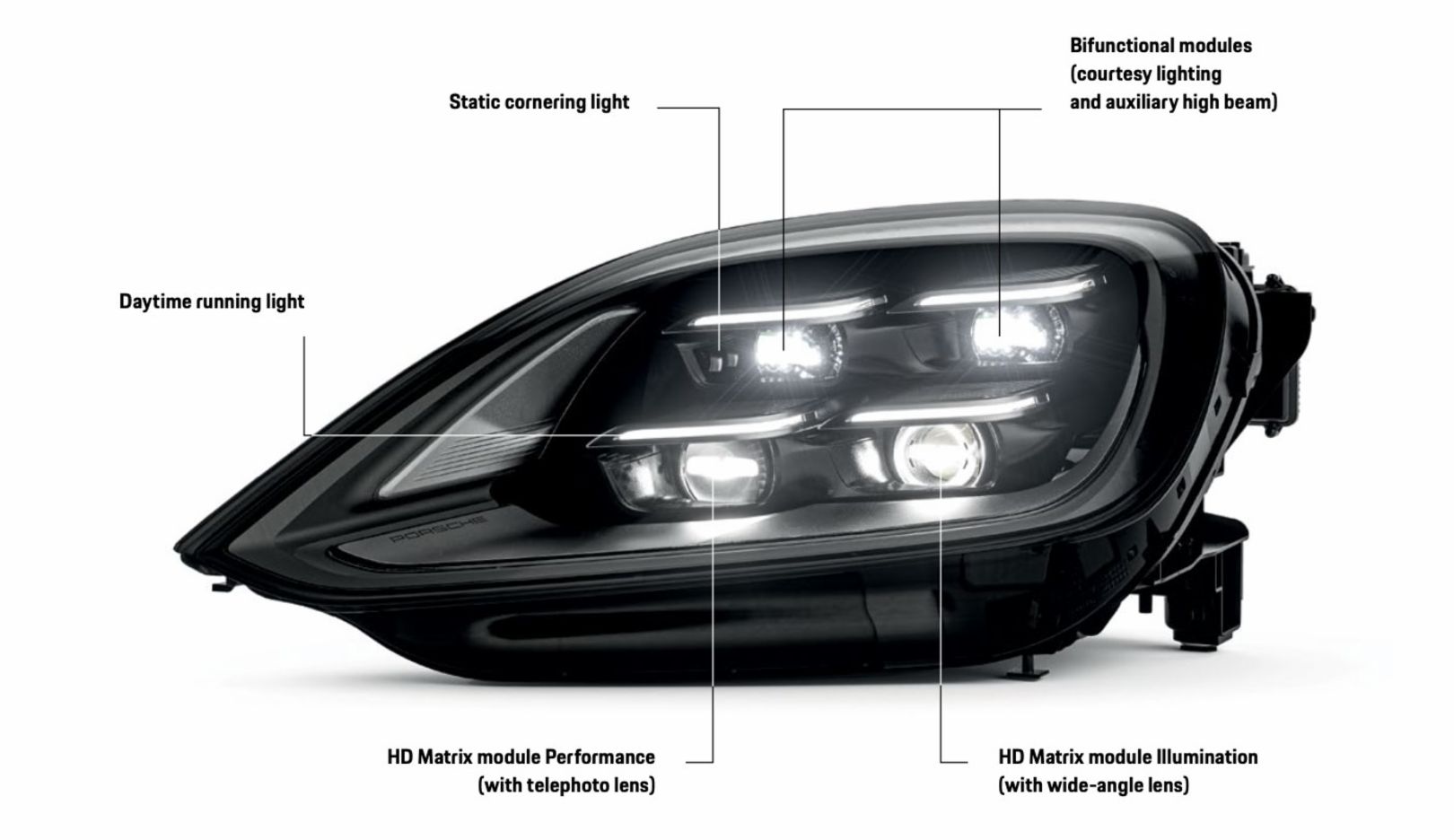
A new signature:
For the first time, this HD Matrix LED headlight can generate all of the daytime running, low beam, and high beam functions with four modules. The four points of light are formed with two modules positioned in an upper row and two in a lower row. All four modules feature a narrow LED strip at the top for the daytime running light. The two components in the lower row conceal the HD Matrix modules.The idea of the four-point daytime running, low beam, and high beam lights at the front of the Porsche 918 Spyder caused quite a sensation around ten years ago, when the super sports car celebrated its world premiere at IAA in Frankfurt in September 2013. The vehicle featured four LED points in a single headlight, with the multifunctional LED low and high beam module in the very center. Five points at night, four during the day. Even back then, two resourceful minds at the Porsche Weissach Development Center – designer Heinz Redlich and engineer Robert Hähle – had a vision of developing four-point daytime and nighttime running lights on this basis at some point in the future. One of them, as Head of Lights, designed the look of the headlights and taillights of the future together with his team in the design studio, while the other, as Head of Development, provided the light and sight necessary to implement them. “We did, in fact, begin thinking about the topic with the 918,” says Redlich. “It had an all-LED headlight on a motorsport level – meaning very light and very efficient. And we made these four points of the daytime running light so dominant that they ultimately shaped the entire brand.” One of the most frequently asked questions at that time: does it work with four points at night too? The answer was no. It was not yet technically possible, as the low beam required different modules than the daytime running light. “But the topic was ever present in our minds,” says Redlich.
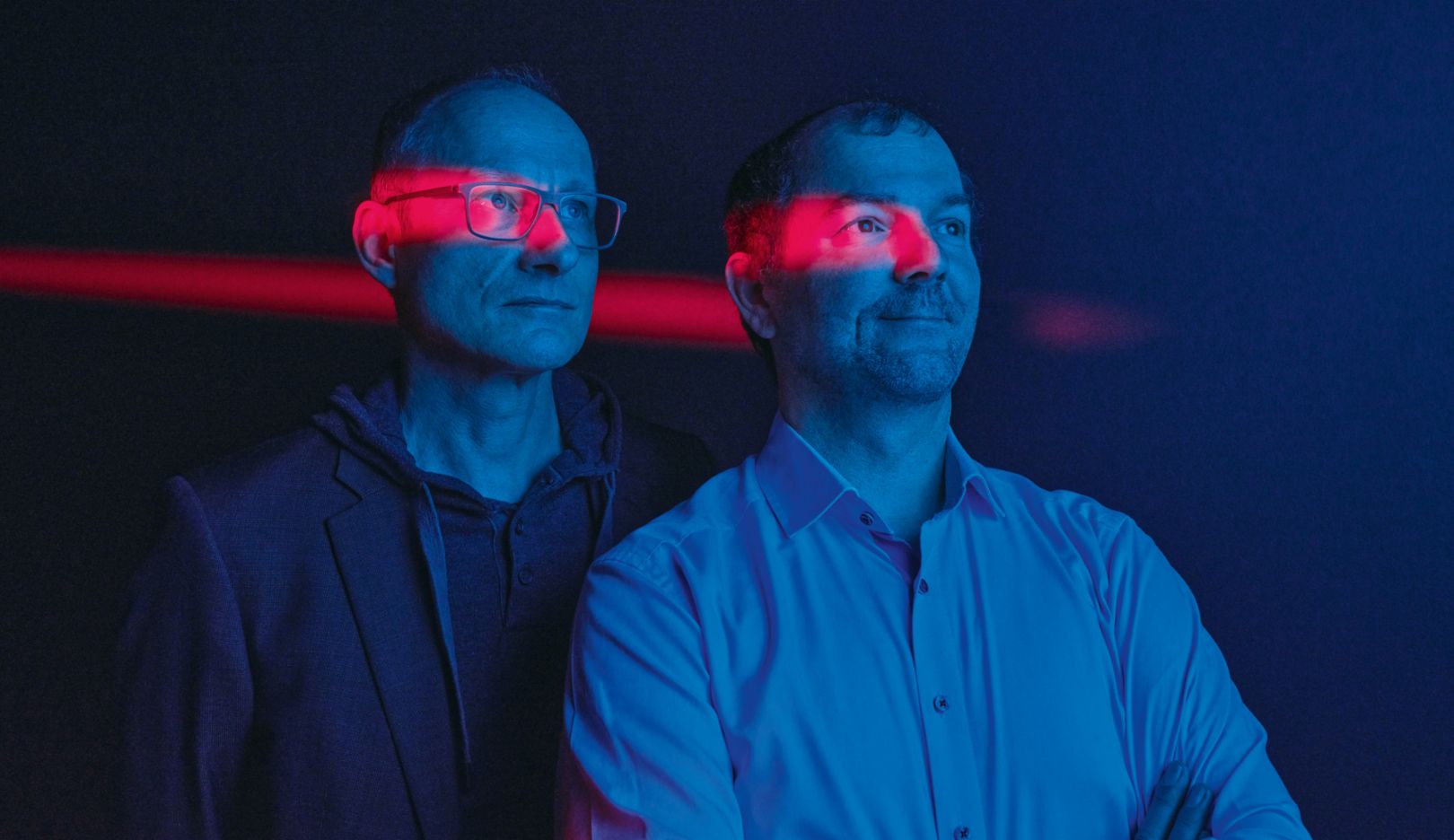
A shining light:
For ten years, designer Heinz Redlich (left) and engineer Robert Hähle have been dreaming about the light of the future – and now it’s a reality.At the same time, Hähle and Redlich continued to optimize the Porsche light with their teams. The first LED matrix light featuring 84 pixels debuted in the Panamera in 2016 and is still one of the best systems on the market to this day. But even at that point, the light could not yet be produced with four modules instead of five. Nonetheless, the experts held fast to their distant goal. “We began intensively discussing the topic of all-LED headlights with four points in 2016,” recalls Hähle. “Because that’s when we could see a new technology on the horizon.” What he’s referring to is the high-resolution HD matrix light, a system with thousands of points of light in a single headlight. However, the technology was not yet ready for series production. Research also needed to be conducted to determine which of the different matrix systems with which resolution would make the most sense for Porsche technologically speaking. And then there was a breakthrough. In 2018, there were signs that an established supplier had already made so much progress in its research on the hardware and software that the new technology and thus possibly the four-point low beam would finally be able to make the jump into series production.
“We then commissioned a light strategy road map,” explains Hähle. “The technology would be used in several different series, which was an important factor.” The challenge of developing a single, highly complex light system for very different vehicles at the same time had begun. All the light of one headlight was split between four modules for the first time. The innovative HD Matrix LED headlights underwent final testing in the new Porsche light tunnel in Weissach, a facility with two-lane testing track measuring more than 100 meters in length and 15 meters in width – for the light of the future.
HD modules with wide angle and telephoto lens
The four points of light of the new HD Matrix LED headlight are formed with two modules positioned in an upper row and two in a lower row. All four modules feature a narrow LED light guide for the daytime running light. With the two upper bifunctional modules, each with six LEDs, Porsche generates the courtesy lighting and the auxiliary high beam. The two actual HD modules are positioned in the lower row, with a single LED chip in the center. Per module, a total of 16,384 micro LEDs, each of which can be controlled using the signals of the front and the online Connect services, are positioned on a surface smaller than the size of half a thumbnail. In addition, data from the chassis, and the associated body movements, as well as data from the steering angles and navigation system, ensure intelligent light distribution.

An active matrix of light:
HD stands for “high definition” – each headlight contains 32,768 LEDs integrated onto two chips, each of which has a surface smaller than that of half a thumbnail. That means a total of 65,536 light pixels, each one of which can be controlled. With performance that offers greater comfort and safety than any light system before it.
The precision and resolution of the light projection are so high that you could actually show movies on a screen with the LED module. And this is a fitting comparison, as the light is projected into the night through lenses. The outer HD module is equipped with a wide-angle lens for large-surface illumination. In contrast, the module featuring a telephoto lens and positioned on the inside of the headlight is responsible for extremely bright projection in the center of the light. The light modules combine to create a fusion of very wide illumination and extremely high light intensity at the center. Robert Hähle and Heinz Redlich with their teams have thus realized the vision of the light of the future.
New Cayenne with Curved Cockpit
The Porsche Cayenne combines the dynamism of a sports car with the comfort of a luxury SUV. Porsche has now fully optimized this formula for success.
External identifying features: the Cayenne boasts an expressive and athletic appearance. In combination with strong wing arches, a new hood, and the optional HD Matrix LED headlights, a new nose highlights the sheer width of the vehicle. There are three new colors to choose from.
A new internal focus: first introduced in the Porsche Taycan, the Porsche Driver Experience places the focus on the driver. Frequently used functions are located right next to or in close proximity to the steering wheel. For example, the driver assistance lever installed behind the wheel to the left now has additional functions for operating assistance systems. The automatic selector lever is now located on the dashboard for the first time. The newly designed cockpit now features an all-digital 12.6-inch instrument cluster with a curved design. The new Cayenne is also concerned with health and features an air quality system that filters out harmful substances from the air in the interior.
There’s also a boost in efficiency and dynamism for increased performance in all three engine variants.
Cayenne S: Fuel consumption* combined (WLTP) 12.7 – 12.0 l/100 km, CO₂ emissions* combined (WLTP) 287 – 272 g/km, CO₂ class G
Cayenne: Fuel consumption* combined (WLTP) 11.7 – 10.7 l/100 km, CO₂ emissions* combined (WLTP) 265 – 242 g/km, CO₂ class G
Cayenne E-Hybrid: Fuel consumption* combined (WLTP) 4.5 – 4.0 l/100 km, Fuel consumption with depleted battery combined 10.6 – 9.9 l/100 km, Electric power consumption* combined (WLTP) 19.8 – 19.1 kWh/100 km, CO₂ emissions* combined (WLTP) 101 – 90 g/km, CO₂ class weighted combined C – B , CO₂ class with depleted battery G
The enhanced four-liter V8 biturbo engine delivers 349 kW (474 PS), while the optimized three-liter V6 turbo engine boasts 260 kW (353 PS). The six-cylinder engine also forms the basis for the powertrain in the Cayenne E-Hybrid. In combination with a 130 kW (176 PS) electric motor, its system output increases to 346 kW (470 PS). The all-electric range is up to 90 kilometers.
Microsite
Find out more about the design and technology of the innovative HD matrix LED main headlights here.
Consumption data
911 GT3 RS
Cayenne
-
11.7 – 10.7 l/100 km
-
265 – 242 g/km
-
G Class
Cayenne E-Hybrid
-
4.5 – 4.0 l/100 km
-
10.6 – 9.9 l/100 km
-
19.8 – 19.1 kWh/100 km
-
101 – 90 g/km
-
C – B Class
-
G Class
Cayenne S
-
12.7 – 12.0 l/100 km
-
287 – 272 g/km
-
G Class
